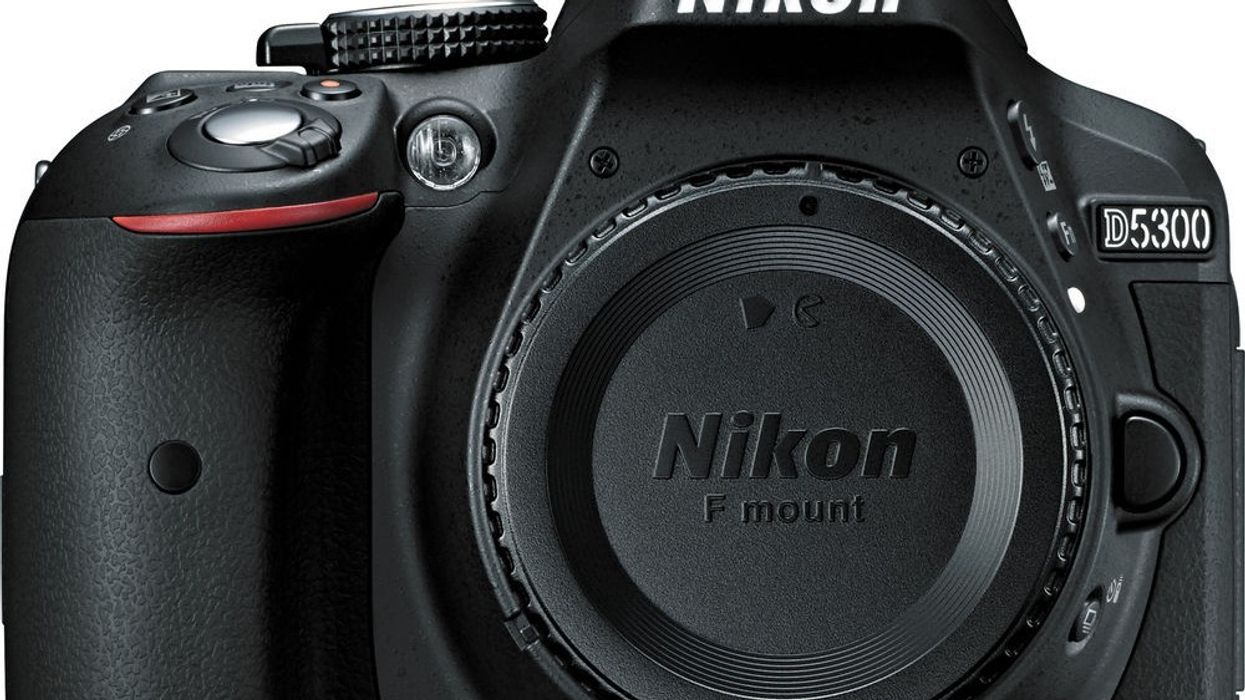New $800 D5300 is the First Nikon DSLR with 1080P 60FPS

Nikon has been slowly improving the video quality on its entry and mid-range APS-C DSLRs, after beating everyone to the punch with the D90 back in 2008. While that camera was limited to 720p and a very low bit rate, we've now finally got full 1080p at 60fps in an affordable Nikon camera, which means real slow motion when played back at 24fps or 30fps. The D5200 rarely suffered from moire and aliasing thanks, in part, to a brand new sensor made by Toshiba that was better suited for video. The D5300 may have a slightly improved version of the same sensor with the low pass filter removed (or maybe a brand new one), but video quality should be similar. Check out more of the new features below.
[Update]: Thanks for DLD for finding it, here's a sample video from the Nikon D5300:
Here are some of the basic specs:
- 24.2MP DX-Format CMOS Sensor
- EXPEED 4 Image Processor
- No Optical Low-Pass Filter
- 3.2" 1,037k-Dot Vari-Angle LCD Monitor
- Full HD 1080p Video Recording at 60 fps
- 1920 x 1080: 60 fps, 50 fps, 30 fps, 25 fps, 24 fps
- 1280 x 720: 60 fps, 50 fps
- ISO: 100-12800 (Extended Mode: 100-25600)
- Built-In Wi-Fi and GPS Connectivity
- Continuous Shooting up to 5 fps
- Active D-Lighting and Built-in HDR
- Available: November 2013
- Price: $800 Body Only, $1,400 with 18-140mm lens
This is NOT a sample from the D5300 (I'm currently looking for some right now), but is instead from the D5200. If the quality is anything like this, it's going to be a very good option as a low-cost DSLR:
They may not be too different on the surface, but the D5200 and D5300 have a few key differences that are big for video people. Obviously the improved low-light performance is a big plus, especially since you no longer absolutely need a full-frame camera just to get quality videos and photos at higher-ISOs. 1080p 60fps is what many Canon users complain about when the company releases a new DSLR, and finally Nikon has beat them to it by introducing it into the D5300. While Sony has been doing 1080p 60fps for some time, Nikon and Canon have both lagged behind -- but it's good to see that with the new EXPEED 4 image processor, the sensor is likely no longer the bottleneck for these kinds of frame rates, and you should be able to take that 60p into post and create some excellent-looking slow motion video.
The other big difference is the fact that the Nikon D5300 lacks an OLPF. This means that there are situations where it may be more prone to aliasing and moire, but it should provide much sharper still images in certain cases. This is not like Canon's cameras which can suffer from extreme moire (except for the higher end DSLRs) -- it seems like it is much more controlled with this sensor and the image processor to the point where you may not come across it except in rare cases. Here is the D7100, which utilizes a similar sensor and also lacks an OLPF just like the new D5300:
Some of the other new features like WiFi and GPS are interesting, and the camera also lets you control it via a smart phone for still image shooting. It doesn't appear that this will work in video mode. Autofocus should be improved from the previous camera, so it may finally be usable for many more situations. The larger screen is a big step up, and hopefully it will make focusing a little easier. The D5300 may very well have the ability to record the HDMI just like the D5200 did, but whether it will actually be usable or not remains to be seen.
Hardware on the lower-end Nikons prevents changing the aperture during live view (this is because of the way the Nikon lenses are made), but for $800 this should compete fairly well with similarly priced cameras for both photo and video. Nikon has surpassed Canon as far as low-end video quality is concerned, but we'll have to wait and see how moire is controlled with the new D5300.
What do you think?
Links:
- Nikon D5300 -- B&H
- Nikon D5300 Product Page
- Nikon D5300 Announcement -- Nikon
[via Nikon Rumors]














